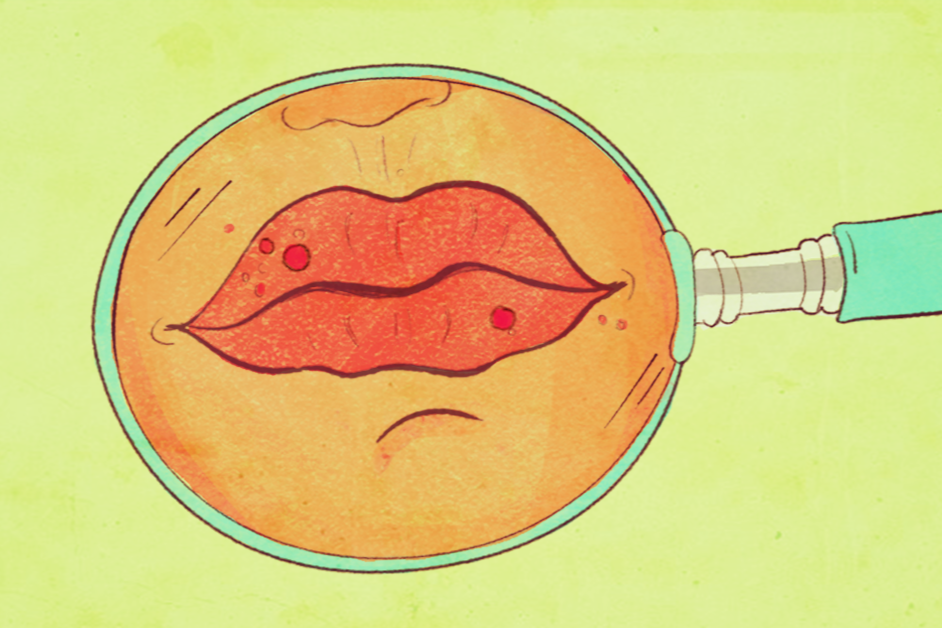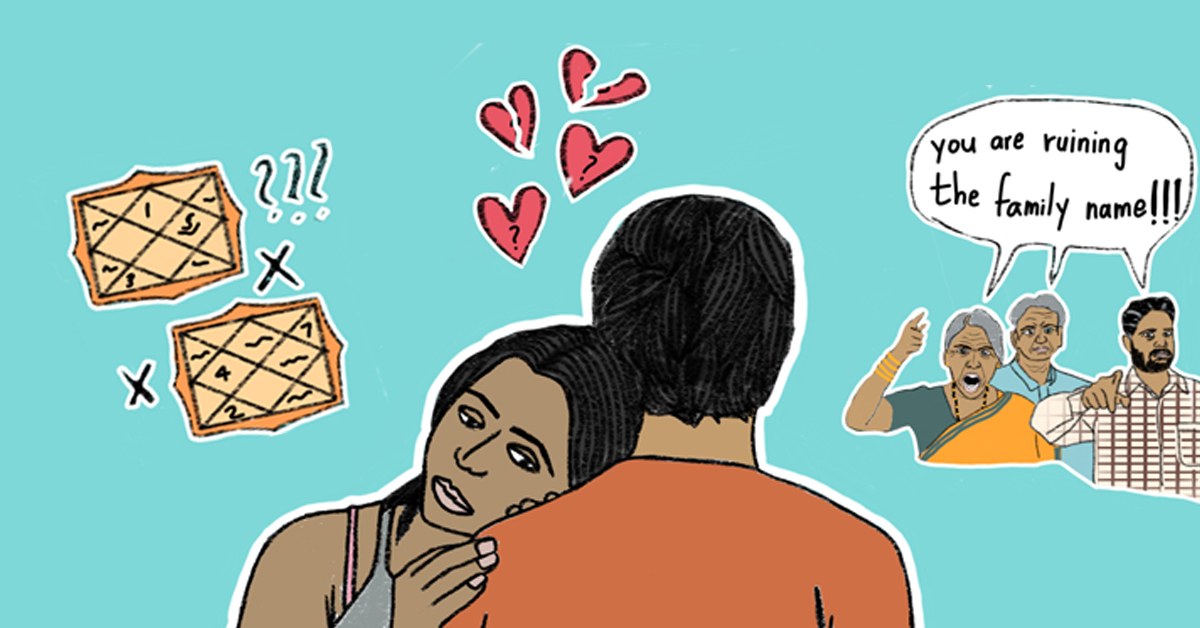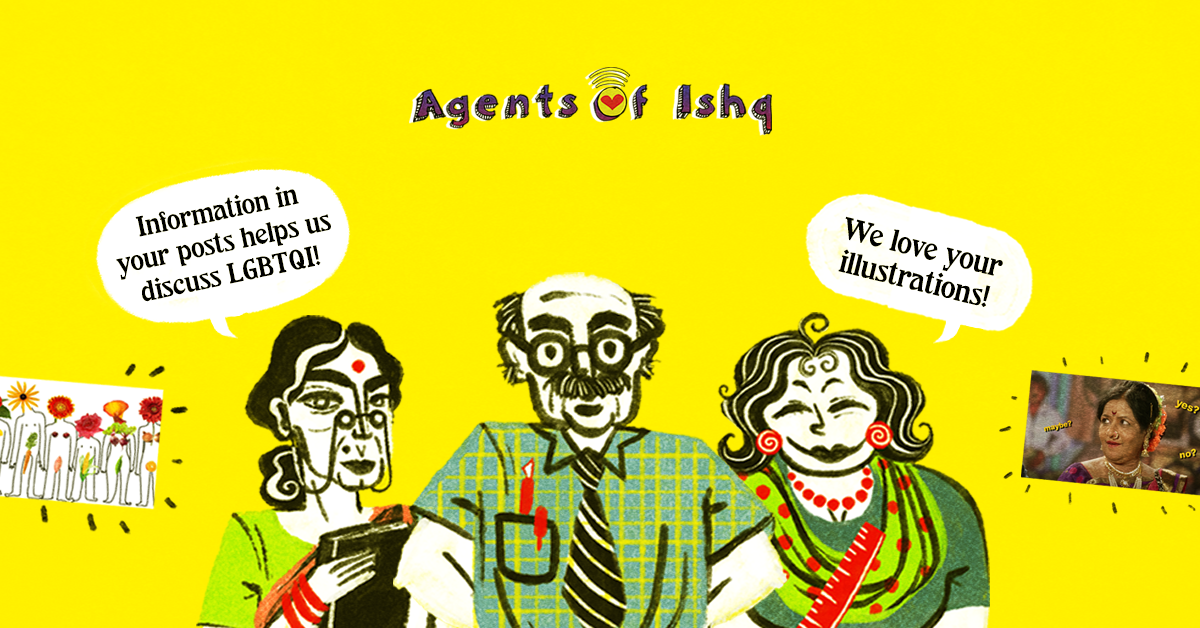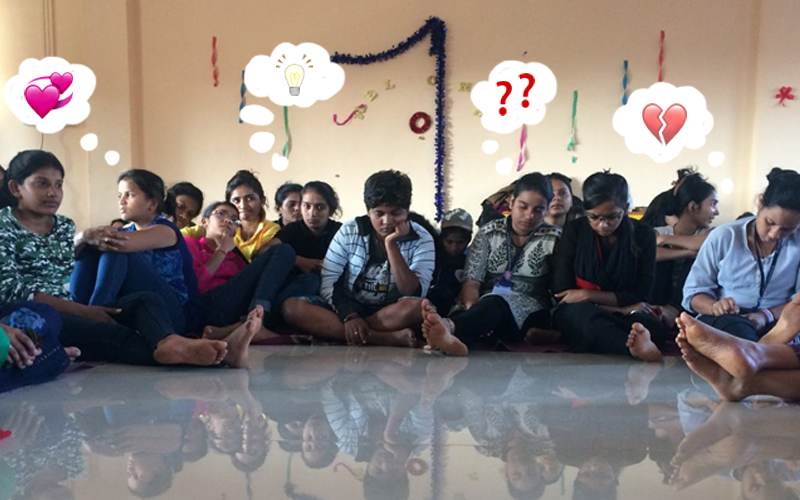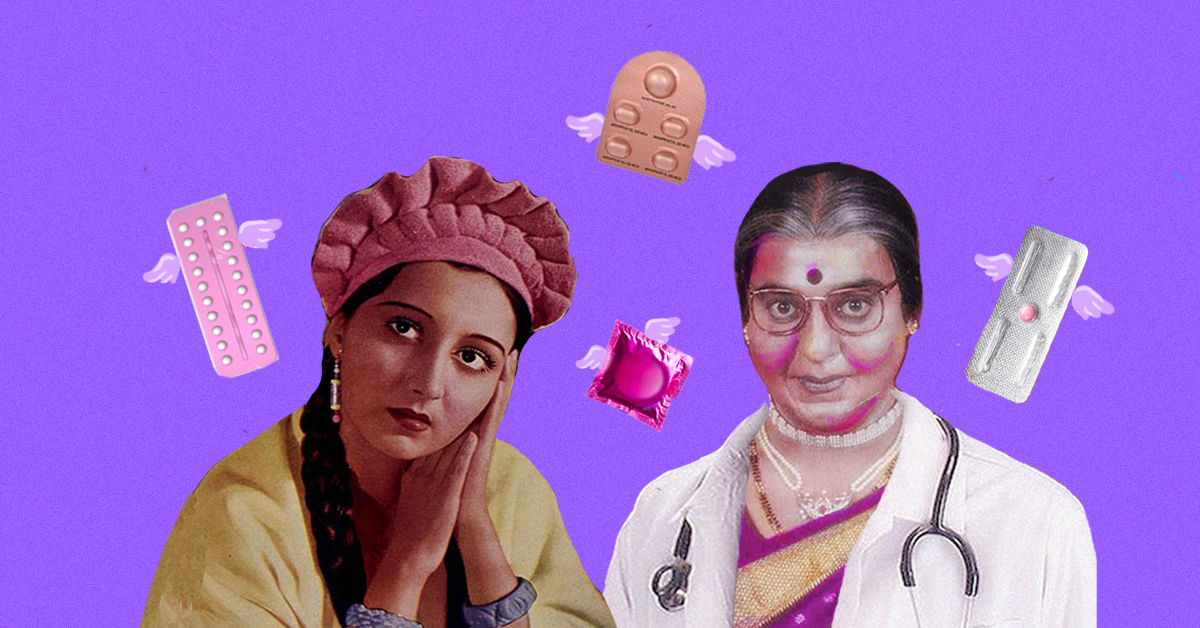“More women should be writing about sex. You should be writing truthfully about what is it you want out of a person. Without shyness. I’m very glad that now more women are writing about sex. Who better than a woman to tell you how to please a woman!”That was the crux of our lively conversation with Jaya Misra at this month’s AOI Conversation as we touched on the process of writing and imagining sex, and why women's voices are essential in conversations around sexuality, gender, pleasure and consent.Jaya is a writer, creative director and producer in the world of television, films, web series and documentaries, and the author of the book Kama: The Story of the Kama Sutra. She has written “Timeout” for Voot, and episodic stories and screenplays of the hit web series Kehne Ko Humsafar Hain for ALT Balaji. Her experience as a screenwriter shows in her debut novel Kama, a fictionalised biography of Vatsyayan – the man who wrote the Kamasutra. The writing here is visual and dramatic, filled with tension, excitement, and with twists and turns in every chapter. It’s like watching a gripping thriller onscreen – the first time we read about Vatsyayan, for example, he is having sex with a woman, slowly bringing her to orgasm. The scene cuts to his uncle, frantically banging on the door from outside, as he needs to see him about an urgent matter. The door blasts open just as the woman comes. If TV wasn’t bound by strict rules on censorship, perhaps that’s what an Ekta Kapoor show would look like. Jaya read us a few passages from her book – some of them particularly steamy! And we asked her about the language she chose to use, which was vivid, sensual and direct when talking about sex. She told us it had something to do with the writers that inspired her. Kamala Das wrote in “a raw manner”, appealing “in a very visceral way to your senses”. Anais Nin, she said, had a “vivid” writing style that was “extremely lyrical”, while Virginia Woolf’s writing showed the internal workings of a woman’s mind. These were some of the influences that she cited, adding that she tried to write with honesty, and that growing older granted her freedom in the way she thought.Her writing in the book, she said, was in contrast to the kind of writing she did for TV soaps, which she described as “running away from sex completely but shrouded in the subtext of ‘When will they have sex? When will they have sex?’”  How did she approach writing about sex of which she had no direct personal experience, such as the homosexual sex that features in Kama? The answer to that, she said, was lots of research – she watched gay porn, looked through art that depicted gay sex, and spoke to her gay friends in order to learn more before she could write about it convincingly.When asked if she thought men and women write sex differently, she replied that she didn’t see it that way. “I don’t think there’s a difference in the way men write sex and women write sex, I think it’s two human beings, how they perceive the world,” she said. A lot of women her age come up to her, she said, and ask her what an orgasm feels like. “They’ve been married for so long, but they’ve never experienced it.” Encouraging people to read the Kamasutra, she said that Vatsyayan wrote about the female orgasm in an era when it was not acknowledged. “Can women have orgasms? Vatsyayan believed they did, and told men how to give them one. He wrote about female pleasure.” That makes her believe he was a feminist, she said, adding that the Kamasutra “really needs to be read”.When the session was opened up for questions from the lovely agents who came in that evening, a few touched on something that Jaya had said earlier about her thoughts on love and lust: “I personally feel that memories of lust are always stronger than memories of love. I think you can recall your encounter of lust in a more vivid manner – love always lands up making you feel very foggy about things. I also feel that love is such a powerful, but such a temporary emotion. I think love and lust are two different kinds of emotions, one should not try to mix both.”One interesting question from a member of the audience was that considering ideas of sexuality and relationships were so fluid in the Kamasutra, how would people of the time perceive our modern monogamous institutions? Would they think these institutions should exist or not?To that zinger, Jaya said that they probably wouldn’t think they should exist. “The Kamasutra is all based on satisfaction – a woman could have up to four lovers if her husband could not satisfy her.” She also spoke about the texts she read as part of her research and the origins of the idea of marriage, saying that monogamous relationships as we know them today have narrowed down considerably – and that it had to do a lot with patriarchy.We left Kala Studio with some food for thought. And we just can’t wait to speak to more #WomenWritingSex!
How did she approach writing about sex of which she had no direct personal experience, such as the homosexual sex that features in Kama? The answer to that, she said, was lots of research – she watched gay porn, looked through art that depicted gay sex, and spoke to her gay friends in order to learn more before she could write about it convincingly.When asked if she thought men and women write sex differently, she replied that she didn’t see it that way. “I don’t think there’s a difference in the way men write sex and women write sex, I think it’s two human beings, how they perceive the world,” she said. A lot of women her age come up to her, she said, and ask her what an orgasm feels like. “They’ve been married for so long, but they’ve never experienced it.” Encouraging people to read the Kamasutra, she said that Vatsyayan wrote about the female orgasm in an era when it was not acknowledged. “Can women have orgasms? Vatsyayan believed they did, and told men how to give them one. He wrote about female pleasure.” That makes her believe he was a feminist, she said, adding that the Kamasutra “really needs to be read”.When the session was opened up for questions from the lovely agents who came in that evening, a few touched on something that Jaya had said earlier about her thoughts on love and lust: “I personally feel that memories of lust are always stronger than memories of love. I think you can recall your encounter of lust in a more vivid manner – love always lands up making you feel very foggy about things. I also feel that love is such a powerful, but such a temporary emotion. I think love and lust are two different kinds of emotions, one should not try to mix both.”One interesting question from a member of the audience was that considering ideas of sexuality and relationships were so fluid in the Kamasutra, how would people of the time perceive our modern monogamous institutions? Would they think these institutions should exist or not?To that zinger, Jaya said that they probably wouldn’t think they should exist. “The Kamasutra is all based on satisfaction – a woman could have up to four lovers if her husband could not satisfy her.” She also spoke about the texts she read as part of her research and the origins of the idea of marriage, saying that monogamous relationships as we know them today have narrowed down considerably – and that it had to do a lot with patriarchy.We left Kala Studio with some food for thought. And we just can’t wait to speak to more #WomenWritingSex!
 How did she approach writing about sex of which she had no direct personal experience, such as the homosexual sex that features in Kama? The answer to that, she said, was lots of research – she watched gay porn, looked through art that depicted gay sex, and spoke to her gay friends in order to learn more before she could write about it convincingly.When asked if she thought men and women write sex differently, she replied that she didn’t see it that way. “I don’t think there’s a difference in the way men write sex and women write sex, I think it’s two human beings, how they perceive the world,” she said. A lot of women her age come up to her, she said, and ask her what an orgasm feels like. “They’ve been married for so long, but they’ve never experienced it.” Encouraging people to read the Kamasutra, she said that Vatsyayan wrote about the female orgasm in an era when it was not acknowledged. “Can women have orgasms? Vatsyayan believed they did, and told men how to give them one. He wrote about female pleasure.” That makes her believe he was a feminist, she said, adding that the Kamasutra “really needs to be read”.When the session was opened up for questions from the lovely agents who came in that evening, a few touched on something that Jaya had said earlier about her thoughts on love and lust: “I personally feel that memories of lust are always stronger than memories of love. I think you can recall your encounter of lust in a more vivid manner – love always lands up making you feel very foggy about things. I also feel that love is such a powerful, but such a temporary emotion. I think love and lust are two different kinds of emotions, one should not try to mix both.”One interesting question from a member of the audience was that considering ideas of sexuality and relationships were so fluid in the Kamasutra, how would people of the time perceive our modern monogamous institutions? Would they think these institutions should exist or not?To that zinger, Jaya said that they probably wouldn’t think they should exist. “The Kamasutra is all based on satisfaction – a woman could have up to four lovers if her husband could not satisfy her.” She also spoke about the texts she read as part of her research and the origins of the idea of marriage, saying that monogamous relationships as we know them today have narrowed down considerably – and that it had to do a lot with patriarchy.We left Kala Studio with some food for thought. And we just can’t wait to speak to more #WomenWritingSex!
How did she approach writing about sex of which she had no direct personal experience, such as the homosexual sex that features in Kama? The answer to that, she said, was lots of research – she watched gay porn, looked through art that depicted gay sex, and spoke to her gay friends in order to learn more before she could write about it convincingly.When asked if she thought men and women write sex differently, she replied that she didn’t see it that way. “I don’t think there’s a difference in the way men write sex and women write sex, I think it’s two human beings, how they perceive the world,” she said. A lot of women her age come up to her, she said, and ask her what an orgasm feels like. “They’ve been married for so long, but they’ve never experienced it.” Encouraging people to read the Kamasutra, she said that Vatsyayan wrote about the female orgasm in an era when it was not acknowledged. “Can women have orgasms? Vatsyayan believed they did, and told men how to give them one. He wrote about female pleasure.” That makes her believe he was a feminist, she said, adding that the Kamasutra “really needs to be read”.When the session was opened up for questions from the lovely agents who came in that evening, a few touched on something that Jaya had said earlier about her thoughts on love and lust: “I personally feel that memories of lust are always stronger than memories of love. I think you can recall your encounter of lust in a more vivid manner – love always lands up making you feel very foggy about things. I also feel that love is such a powerful, but such a temporary emotion. I think love and lust are two different kinds of emotions, one should not try to mix both.”One interesting question from a member of the audience was that considering ideas of sexuality and relationships were so fluid in the Kamasutra, how would people of the time perceive our modern monogamous institutions? Would they think these institutions should exist or not?To that zinger, Jaya said that they probably wouldn’t think they should exist. “The Kamasutra is all based on satisfaction – a woman could have up to four lovers if her husband could not satisfy her.” She also spoke about the texts she read as part of her research and the origins of the idea of marriage, saying that monogamous relationships as we know them today have narrowed down considerably – and that it had to do a lot with patriarchy.We left Kala Studio with some food for thought. And we just can’t wait to speak to more #WomenWritingSex!
